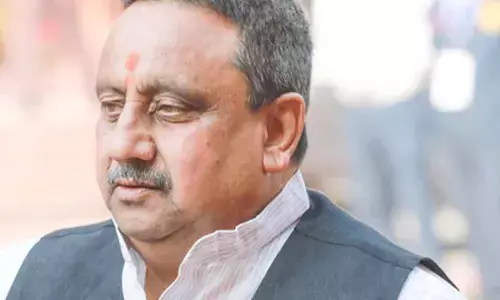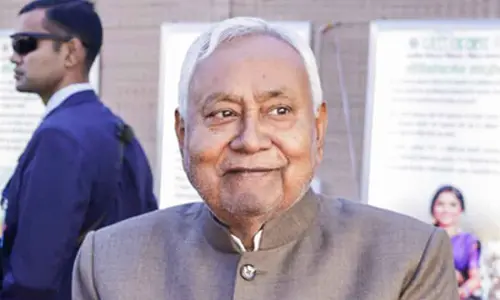Administrative reforms, addressing public grievances key to a vibrant Viksit Bharat

A fillip to the education sector came with the launch of the Right to Education Act in 2010
Administrative reforms and inclusivity in addressing people’s socio-economic, educational and health related grievances during Amrit Kaal will go a long way in laying the foundation for a strong and vibrant Viksit Bharat. A wholesome multifaceted approach should be adopted by all departments and stakeholders in public and private sectors and put in place a vibrant, action-oriented, corruption and redtapism-free public grievance disposal mechanism. It is really agonizing if people have to move from pillar to post seeking justice, get their cases registered, reap the benefits of affirmative and welfare measures of the government, avail educations loans from banks, starting new businesses and other such enabling initiatives meant for people belonging to the weaker sections of society. They are also the worst sufferers of poor grievance redressal mechanisms.
So, there is a great responsibility on the shoulders of the Department of Administrative Reforms and Public Grievances (DARPG) both at the Central and the State levels. The Central government’s DARPG released its year-end review on January 4, detailing its activities in 2023, where nearly 19,45,583 grievances and around 1,79,892 appeals were received by all the Central ministries and departments. Meanwhile, close to 7,32,355 feedbacks were collected by the BSNL Call Centre directly from the citizens from January to November regarding redressal of grievances. As per the up-to-date e-office data made available through the e-office analytics dashboard, launched in December 2023, the central ministries and departments achieved 90 per cent adoption of e-office in generation of e-files; 90 per cent digitization of all receipts into e-receipt and successful implementation of IEDM through effective achievement of delayering with the levels of decision making in e-office file movement in the three years ending in November 2023.
There is a need to further expand the ambit of administrative reforms as they play an important role in the efficient functioning and responsiveness of governmental institutions. They are crucial for ensuring transparency, accountability, and effectiveness in public administration. By streamlining bureaucratic processes, reducing red tape, and embracing modern technologies, administrative reforms contribute to the overall improvement of governance. These reforms help enhance the delivery of public services, making them more accessible and citizen-centric. They also foster a culture of innovation and adaptability within the public sector, enabling governments to respond more effectively to evolving societal needs and challenges. Administrative reforms are essential for combating corruption, promoting ethical conduct, and building public trust in governmental institutions.
A commitment to continuous administrative reforms is in fostering a resilient and responsive government that upholds the principles of good governance. Towards this, there are certain sectors where India needs to be very particular about. For example, education is of paramount importance for us. The Centre has taken several steps to improve the education sector in the country. The first major policy reform was the implementation of the Right to Education Act (RTE) in 2010. This Act made education a fundamental right for all children aged 6-14 years and mandated that private schools reserve 25 per cent of their seats for students from economically weaker sections.
This led to a significant increase in the number of children attending school and an improvement in literacy rates across the country. The Gross Enrolment Ratio (GER) in higher secondary schools has made significant improvement from 53.8 per cent in 2020-21 to 57.6 per cent in 2021-22, indicating an increase in access to education. However, do we know that the provisions of RTE are being implemented by all private schools in totality? Perhaps, not! A mechanism has to be evolved where there is a seamless flow of information among all stakeholders with regard to the implementation of the RTE and people should have direct access to the relevant information so that they can point any gaps if stumbled upon by them. Similarly, we do not know whether all higher education institutions (HEIs) are implementing quota in admission in courses and hostels for SC, ST, OBC and EWS students or not? Whether HEIs follow the norms in the recruitment of faculty members or not? There is no dearth of complaints and grievances with regards to admission and recruitment of teachers in HEIs from across the country. It needs to be seen and ensured that total transparency is maintained in matters of affirmative measures and the respective DARPG must intervene wherever there are complaints.
The new National Education Policy (NEP) 2020 seeks to achieve a GER of 50 per cent in higher education and 100 per cent in preschool to secondary level education by 2030. We have to ensure proportional representation of students from SC, ST and OBC communities, in seats of higher education in private and public sectors when we achieve the target of 50 per cent. It is a serious matter which can be addressed only through reforms in the process of admission in all HEIs by making them to comply with quota norms as per the policies in force. The education sector, which has traditionally been underfunded and lacked proper infrastructure, is now being provided with adequate funds for capacity building. The Union Budget 2023 set aside Rs. 1.12 lakh crore for education, the highest ever and an increase of around 8.2 per cent to what was allocated in 2022 but making sure that funds are properly and inclusively utilized requires a robust administrative mechanism.
Similarly, a report by the National Skill Development Corporation (NSDC) suggests that the Skill India initiative has helped to create over 1.36 crore jobs between 2015 and 2021.
The initiative has also led to an increase in the number of women participating in the workforce, from 38 per cent in 2016 to 47 per cent in 2019, indicating a positive trend towards gender-equality in the workforce.


















